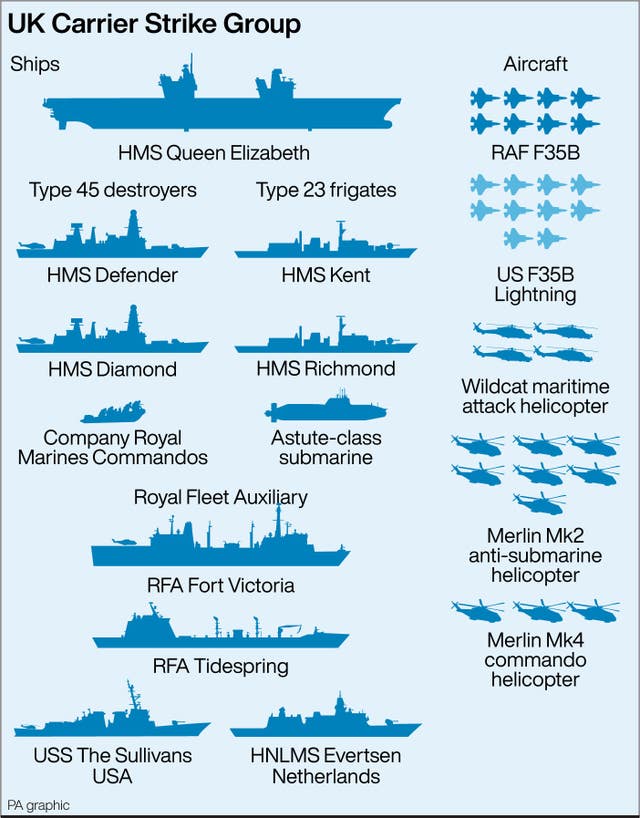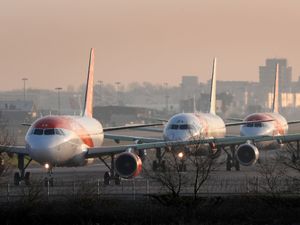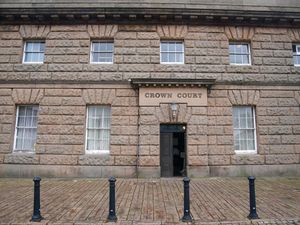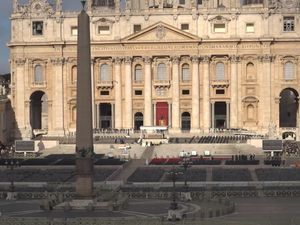Defence Secretary offers Covid-19 jab commitment for HMS Queen Elizabeth sailors
During the 28-week deployment, ships from the Carrier Strike Group are expected to visit more than 40 countries.

Every sailor onboard the aircraft carrier HMS Queen Elizabeth for its first operational deployment will have received two Covid-19 jabs, according to Defence Secretary Ben Wallace.
The £3 billion warship, with eight RAF F35B stealth fighter jets on board, will depart for Asia accompanied by six Royal Navy ships, a submarine, 14 naval helicopters and a company of Royal Marines.
The Carrier Strike Group (CSG), which will carry out visits to India, Japan, South Korea and Singapore, will include the US destroyer USS The Sullivans and the Dutch frigate HNLMS Evertsen.
A squadron of 10 US Marine Corps F35B Lightning II jets will also be embarked on the carrier in what the Ministry of Defence (MoD) is describing as the “largest concentration of maritime and air power to leave the UK in a generation”.

Labour pressed Mr Wallace over the Covid-19 protocols in place, with the Cabinet minister telling the Commons: “There are plenty of safeguards in place for Covid, we’re all very mindful of protecting our sailors.
“All our sailors will be Covid vaccinated and protected on that deployment, by the time they actually go into the Mediterranean they’ll all be properly doubly vaccinated to make sure that we can give our friends and allies that reassurance that the crew will be rightly protected.
“The Navy is almost one of the best organisations in Covid safeguards because I’m afraid living with quarantinable diseases has been something they have had to do for hundreds and hundreds of years.”
Mr Wallace earlier said it is hoped the deployment will “tighten political ties” in the region, adding: “China is increasingly assertive, building the world’s largest maritime surface and sub-surface fleet.
“However, we are not going to the other side of the world to be provocative. We will sail through the South China Sea, we will be confident but not confrontational.
“More often than not, the carrier group will be in the Eastern Mediterranean or the Atlantic, carrying out our duties in support of Nato.”
Shadow defence secretary John Healey described the deployment for the Queen Elizabeth as a “gap year tour of 40 countries” as he stressed the need for Britain’s military interests to be protected in future.
He said: “The Secretary of State has talked about hard power and soft power.

“Across the House we hope Britain will see significant diplomatic and trade benefits from this deployment.
“However, with Covid security, how far will the diplomatic impact be reduced when the carrier can’t host guests or send people ashore?
“This deployment is important proof of our new British carrier strike capability, but let’s not fall for the illusion that Britain is somehow able to project force everywhere in the world at once.
“Global Britain is a beguiling phrase but this time-limited deployment will not significantly alter the balance of military power in the Indo-Pacific region, and surely we should focus our defence efforts on where the threats are – not where the business opportunities might be.”
During the 28-week deployment, ships from the Carrier Strike Group are expected to visit more than 40 countries and undertake more than 70 engagements, including sailing alongside the French carrier Charles De Gaulle in the Mediterranean.
The deployment has been organised as part of the “UK’s tilt to the Indo-Pacific region” in a bid to “bolster deep defence partnerships” as well as to take part in an exercise to mark the 50th anniversary of the Five Power Defence Arrangements with Malaysia, Singapore, Australia and New Zealand.
Accompanying HMS Queen Elizabeth will be a surface fleet made up of Type 45 destroyers HMS Defender and HMS Diamond, Type 23 anti-submarine frigates HMS Kent and HMS Richmond, and the Royal Fleet Auxiliary’s RFA Fort Victoria and RFA Tidespring.
The Royal Navy Astute-class submarine will also be deployed, armed with Tomahawk cruise missiles.
As well as the stealth fighters, four Wildcat maritime attack helicopters, seven Merlin Mk2 anti-submarine helicopters and three Merlin Mk4 commando helicopters will be embarked – the greatest quantity of helicopters assigned to a single UK Task Group in a decade.
Prior to leaving the UK, the CSG will take part in a major exercise, Strike Warrior, off the coast of Scotland before departing for the Mediterranean.





